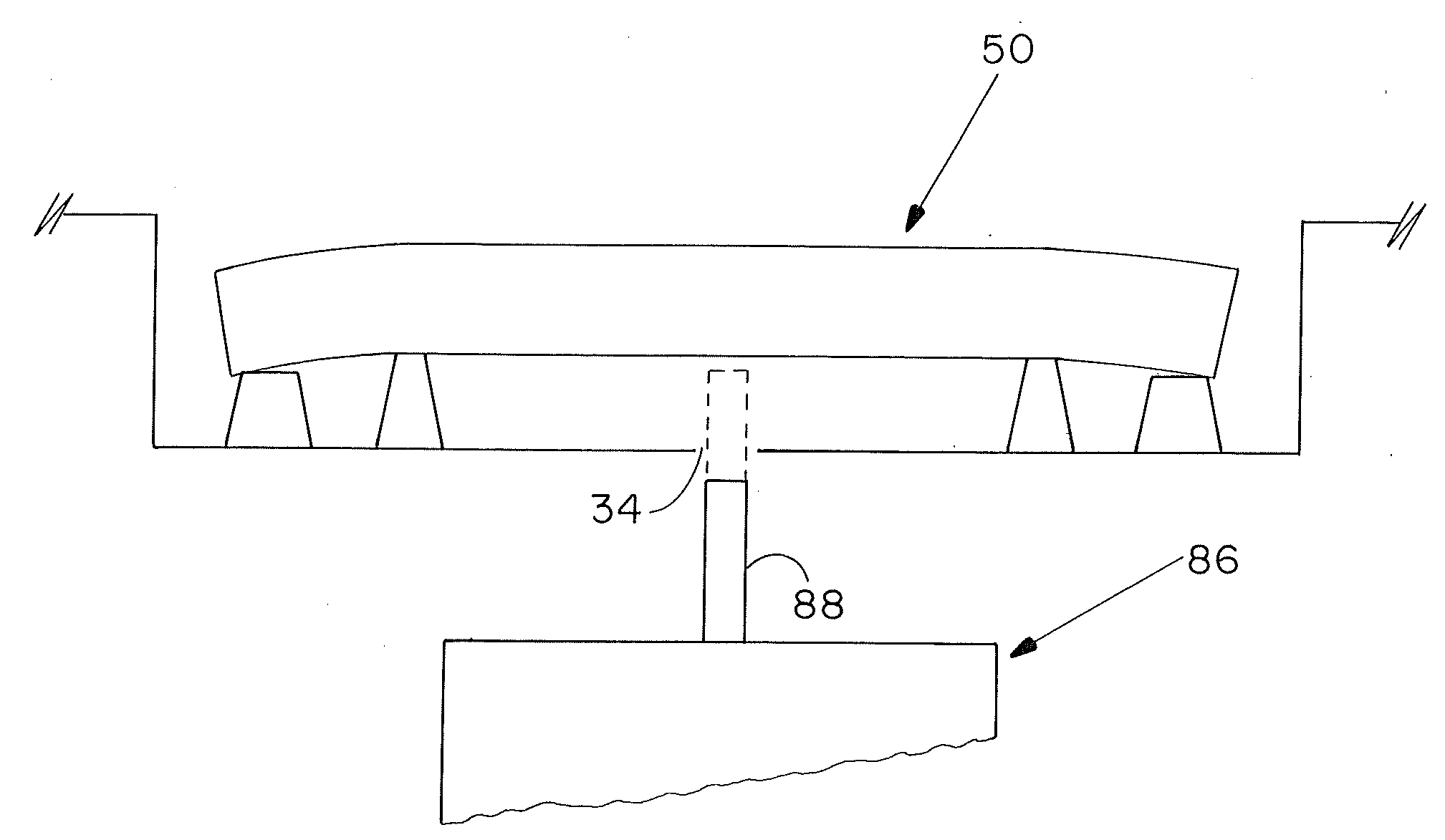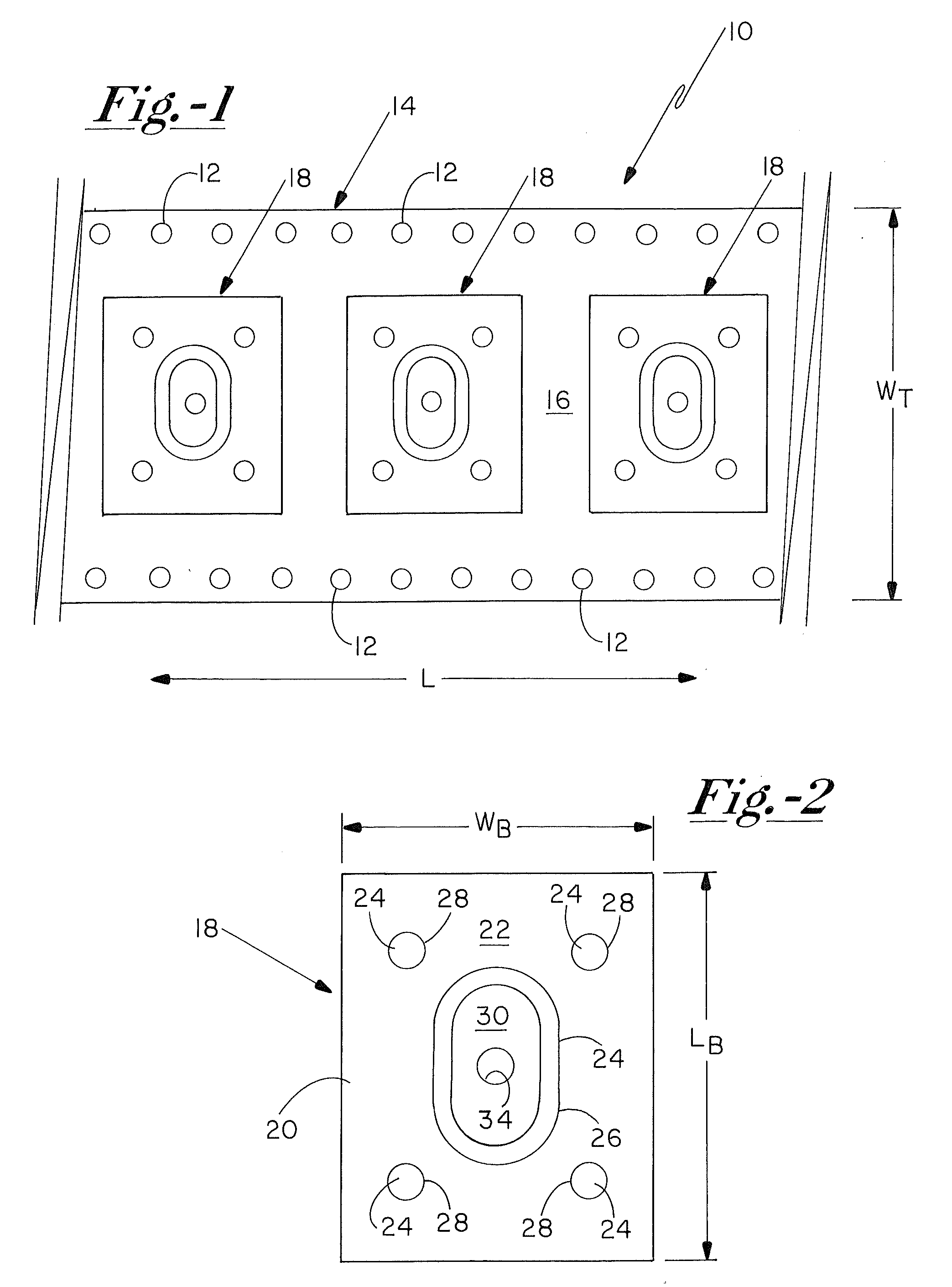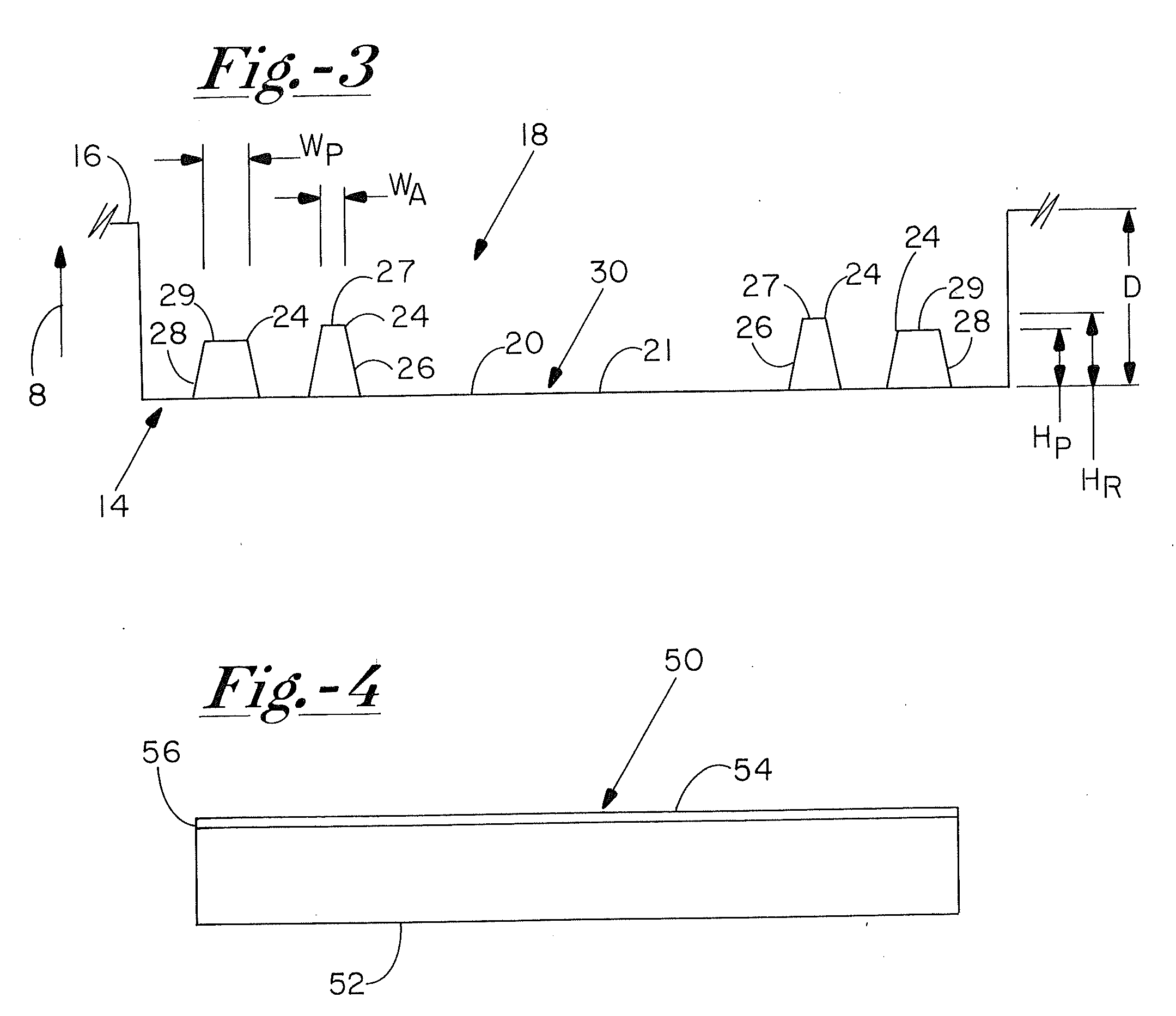Method for packaging thermal interface materials
a thermal interface and material technology, applied in the field of packaging systems, can solve the problems of reducing the performance of electronic components, damage or shutting down of electronic components, and the difficulty in implementing the installation of relatively low-modulus tim with pick and place equipment, so as to reduce the risk of damage, reduce the surface area, and reduce the effect of modulus
- Summary
- Abstract
- Description
- Claims
- Application Information
AI Technical Summary
Benefits of technology
Problems solved by technology
Method used
Image
Examples
example
[0047]The following example sets forth a particular embodiment of the invention. The dimensions, materials, and arrangements described in the following example, however, are exemplary only, and illustrate only one set of a variety of dimensions, materials, and arrangements contemplated by the present invention.
[0048]A carrier tape having a width dimension “WT” of about 24 mm was prepared from a polystyrene through a known molding process, such as a thermoforming molding process. A set of sprocket holes were punched through the carrier tape along its length and proximate to a first edge thereof. Sprocket hole spacing was set at 4 mm on center, according to an EIA standard for tape and reel package systems. A series of cavities having a spacing of 16 mm on center was provided, with each cavity having a base width dimension “WB” of 11.7 mm, and a base length dimension “LB” of 14.9 mm, wherein each base of each cavity assumed a substantially rectangular shape.
[0049]Base 20 was recessed ...
PUM
| Property | Measurement | Unit |
|---|---|---|
| diameter | aaaaa | aaaaa |
| thickness | aaaaa | aaaaa |
| thickness | aaaaa | aaaaa |
Abstract
Description
Claims
Application Information
 Login to View More
Login to View More - R&D
- Intellectual Property
- Life Sciences
- Materials
- Tech Scout
- Unparalleled Data Quality
- Higher Quality Content
- 60% Fewer Hallucinations
Browse by: Latest US Patents, China's latest patents, Technical Efficacy Thesaurus, Application Domain, Technology Topic, Popular Technical Reports.
© 2025 PatSnap. All rights reserved.Legal|Privacy policy|Modern Slavery Act Transparency Statement|Sitemap|About US| Contact US: help@patsnap.com



